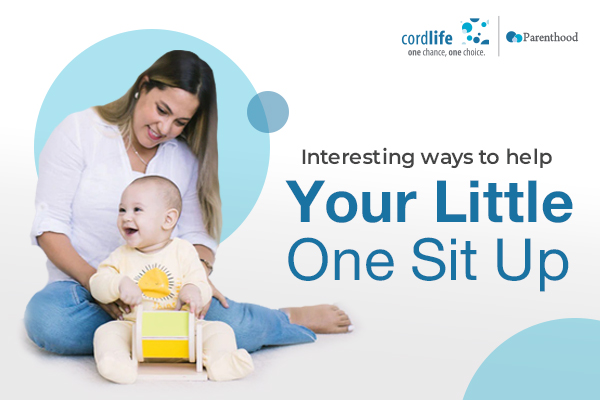Table of Contents
As new parents, we know that you feel elated to see your baby achieve milestones. Some of these achievements help your little one slowly become independent in the future. Your sweet little one might have started crawling, rolling, and enjoying his or her tummy time, but do you know when your sweet and cuddly baby will sit up? Sitting is indeed a very sweet milestone that your chubby baby might achieve in due time. However, as new parents, you first need to understand the signs determining when your baby starts sitting up to ensure that you help your baby sit up.
When Do Babies Sit Up?
To sit up unassisted, your baby must have a strong upper body and must be able to hold his or her head high.
- At around 2 months old, your little one should push forward while lying on the stomach.
- At around 4 months old, your little one should be able to hold his or her head steady without support.
- At around 6 months old, he or she would try to sit with a little help. At this time around your little prince or princess will start enjoying his or her tummy time. However, at this time when the upper part of his or her body gathers a little strength, you can help your baby to sit up with the help of a pillow.
- You might want to know when would your baby sit up from the lying down position. Well! By 7 months, your baby may sit up from a lying-down position by pushing up from the stomach.
- By 9 months, your baby would get into a sitting position without help.
What Are the Signs That Your Baby Is Ready To Sit Up?
As mentioned above, remember your baby will be able to sit if he or she has good control over his or her head. However, if your baby is going close to anywhere between 7 to 9 months, he or she would be able to sit up after being able to roll in both directions. In fact, at this stage, your baby may also scoot back and forth or may try to start sitting up and crawling. However, when you make your baby sit on the floor, you might observe him or her trying to tripod. This is when your little one is trying to sit with the support of one or both hands. This shows that he or she would soon be able to sit up, on his or her own.
How Can You Help Your Baby Sit Up?
While you help your baby to sit up, remember he or she needs control over the weight so that your little one can gain strength to move. Therefore, once you understand the signs of your baby’s sitting up, you can help him or her out. Here are some ways that you can try out:
Add More Tummy Time
By 3 months, your baby is expected to get control of his or her head. So, begin your tummy time since then. Ensure that you make him or her lie on any surface – maybe the floor or the bed to increase the tummy time. More tummy time means making your baby’s neck, upper body muscles strong. You can make tummy time interesting and fun for your little one by shaking rattles.
Some Back Time
Just like tummy time, lying on the back becomes equally important. It will strengthen your baby’s ab muscles, chest, and trunk. So, make him or her lie on his her back more often.
Hold Your Baby To Sit Up
Make your cuddly little prince or princess practice a little before you make him or her sit. As the old saying goes, practice makes a man perfect. For instance, sit on the floor with your baby between your legs and support him or her, while he or she’s learning to sit up from the floor. Support him or her with some pillows or cushions while he or she’s trying to balance his or her sitting position on your lap. You can also prop him or her to the corner of a sofa. Alternately make your little one sit in the crib and place a toy right in front of him or her while he or she is trying to balance his or her sitting position. Ensure that while you’re making your little one practice sitting, hold his or her body.
Use Infant Chairs For Sitting Up
If your baby is between 4 and 5 months old, he or she would be able to sit on the chair with some help. An infant sitting up in a chair is perfect if your child has just started sitting with support and needs to strengthen his or her upper body.
Help Your Child Sit Up On His Own With Caution
While giving your little one training to sit, be a little careful and take these precautions:
- You must not leave him or her unattended
- If you have high infant sitting chairs, fasten safety belts. Also, try not to put the newborn sit-up seats on high surfaces or near water.
- Don’t let your baby sit on swings or baby seats for too long. Allow your baby to move, and help him or her to learn new skills of sitting. This will help him or her to grow and develop.
However, if you feel that your baby is not sitting up before or at 11 months, you might have reason to worry and suspect that your child has a developmental delay – like tight muscles, or floppy movements. Follow your mommy instincts in this case and consult with your doctor immediately. However, remember that children develop differently. Some might master their gross motor and cognitive skills early; some might develop later on.
Also, to gain some more knowledge on baby care and cord blood banking, follow our blog page.
